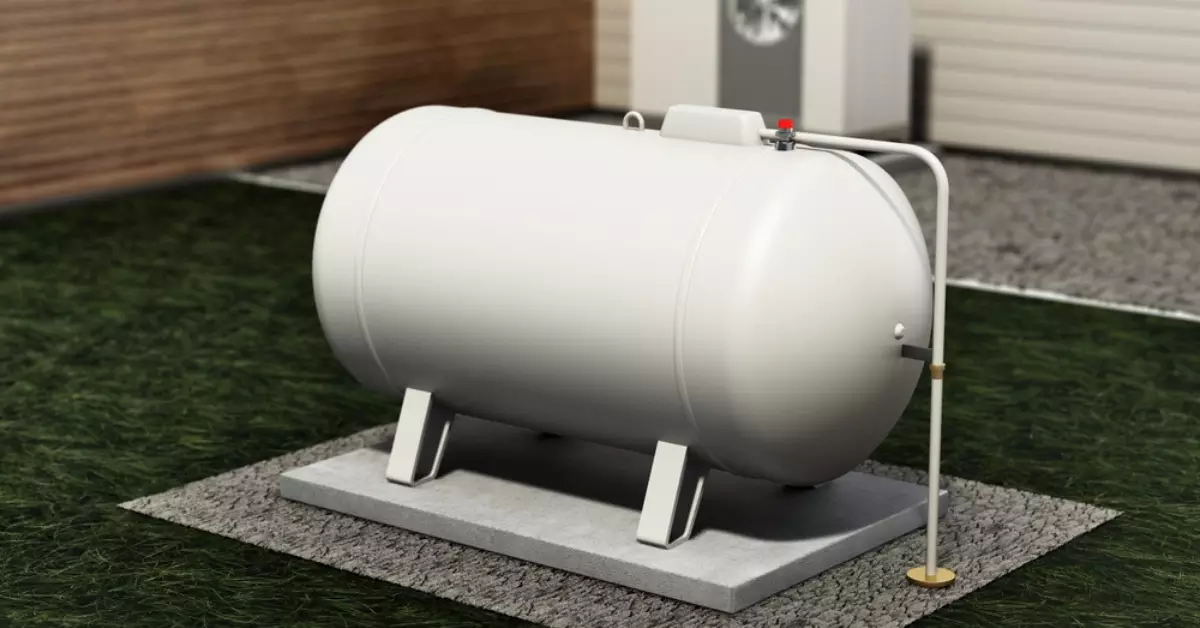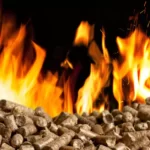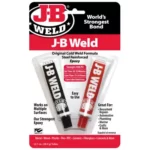Propane tanks, ubiquitous in homes and industries alike, serve a critical role in energy provision. These sturdy vessels are designed to store and transport propane gas safely, a flammable substance that can be hazardous if mishandled. Interestingly, an aspect often overlooked but critical to the tank’s safety and performance is its thickness.
The thickness of a propane tank is not a random decision made by manufacturers. It is a calculated specification primarily influenced by factors such as the tank’s material, design, and regulatory standards. Generally, a propane tank’s thickness ranges from 1/4″ to 1/2″, though it can vary based on the tank’s size and intended use.
Propane tank thickness is an essential parameter that contributes to the tank’s durability, lifespan, and, most importantly, the safety of its operation. Given its significance, this topic certainly warrants a thorough discussion.
Propane Tanks Basics
Propane Tank Materials and Construction
A propane tank’s construction is a meticulous process, with steel being the primary material used. The tank’s quality and safety are paramount, as it is expected to withstand the pressure exerted by stored propane. Consequently, the manufacturing process ensures a robust, corrosion-resistant, and leak-proof tank.
Different Sizes and Types of Propane Tanks
Propane tanks come in a variety of sizes and types, each suited for a specific application. Small tanks, typically with a 20-pound capacity, are commonly used for grills and patio heaters. Larger tanks, which can store several hundred or even thousands of gallons of propane, are suited for commercial and industrial uses.
Factors Affecting Propane Tank Thickness
The thickness of a propane tank isn’t an arbitrary figure. It’s a calculated dimension that’s influenced by a host of factors. We’ll explore these factors in detail in this section.
Role of Material and Design in Determining Thickness
The material and design of the propane tank are perhaps the most influential factors in determining its thickness.
- Material: The material choice for propane tanks is typically steel, though it comes in various grades, each with different properties. Steel’s durability and strength make it an excellent choice for withstanding the high pressure exerted by the stored propane gas. The specific grade of steel selected for the tank dictates the necessary thickness to ensure the vessel can safely withstand these forces.
- Design: The design of the propane tank includes its size, shape, and pressure capacity. Larger tanks designed to store more propane or tanks meant to hold gas under high pressure require a greater thickness to resist the increased internal forces. Similarly, certain design elements like dome-shaped ends are integrated to improve pressure resistance, thereby influencing the required tank thickness.
Impact of Regulations and Safety Standards
While manufacturers do have some leeway in material selection and design, they must also adhere to strict regulations and safety standards, which play a significant role in determining propane tank thickness.
- Regulatory Compliance: Organizations like the American Society of Mechanical Engineers (ASME) set the standards for propane tank construction. These standards ensure safety by specifying minimum thicknesses and material requirements that tanks must meet. Non-compliance with these standards can lead to penalties and could put users at risk.
- Safety Standards: Safety standards are not only about compliance; they’re also about maintaining a company’s reputation and ensuring customer trust. Thus, many manufacturers aim to exceed the minimum safety standards set by regulatory bodies. This practice often means constructing tanks with greater thicknesses than what regulations might dictate.
Common Thickness of Propane Tanks
With the factors influencing propane tank thickness in mind, let’s examine the common thicknesses you might find in various types of propane tanks.
Typical Thickness for Residential Propane Tanks
Residential propane tanks are typically smaller, designed to fuel things like barbecue grills and home heating systems. Given their smaller size and lower pressure capacity, their thickness requirements are accordingly less.
- Barbecue Tanks: These small tanks, commonly known as 20-pound tanks, are popular for backyard barbecues and patio heaters. They typically have a thickness of about 1/4″.
- Home Heating Tanks: Larger residential tanks, designed to fuel home heating systems, generally fall within the 5/16″ thickness range. This size provides a balance between robustness and cost-effectiveness.
Thickness for Commercial and Industrial Propane Tanks
Commercial and industrial propane tanks are larger and are designed to handle a greater amount of propane under higher pressure. Hence, these tanks require a greater thickness to maintain structural integrity and safety.
- Commercial Tanks: These tanks, typically used for heating large buildings or powering commercial kitchens, require a thickness of about 3/8″.
- Industrial Tanks: The largest of propane tanks, designed for industrial applications or bulk storage, have a thickness ranging up to 1/2″. This thickness ensures these tanks can safely store large volumes of propane under considerable pressure.
Importance of Propane Tank Thickness
Now that we know the factors affecting thickness and the common thicknesses of propane tanks let’s delve into why thickness is important.
Safety Implications of Propane Tank Thickness
The thickness of a propane tank directly affects its safety. The tank’s walls must be thick enough to withstand the pressure exerted by the stored propane gas, thus preventing possible rupture or leaks.
- Prevention of Rupture: A sufficiently thick tank can safely contain the pressurized gas, reducing the risk of rupture. Rupture of a propane tank can result in catastrophic outcomes, including explosions or fire.
- Resistance to Damage: A thicker tank is also more resistant to external damage. It can withstand minor impacts and harsh weather conditions without compromising the integrity of the tank.
Relationship between Tank Thickness and Life Span
The thickness of a propane tank also affects its lifespan. With a thicker wall, the tank can better resist wear and tear, extending its service life.
- Resistance to Corrosion: Thicker tanks are more resistant to corrosion, a common issue with steel tanks. This resistance means that the tank will maintain its structural integrity for a longer period, prolonging its lifespan.
- Tolerance to Wear and Tear: Thicker tanks are less prone to damage from regular wear and tear. Whether it’s the constant pressure fluctuations as the tank is filled and emptied or the exposure to outdoor elements, a thicker tank will endure these conditions better, leading to a longer service life.
Checking Propane Tank Thickness
Basic Steps for Inspecting a Propane Tank’s Thickness
Inspecting a propane tank’s thickness involves several steps:
- Examine the exterior for signs of wear or damage.
- Use a thickness gauge to measure the tank’s thickness at various points.
- Compare the measurements with the tank’s specified thickness.
Role of Professionals in Checking Propane Tank Thickness
While the above steps can give a basic understanding, professional inspection services provide a thorough examination. These experts use advanced techniques, like ultrasonic testing, to precisely measure a tank’s thickness and detect any issues.
Propane Tank Maintenance
Maintenance Tips to Ensure Optimal Thickness
Here are a few maintenance tips:
- Regularly inspect the tank for signs of wear, corrosion, or damage.
- Keep the tank clean and free from debris or excessive moisture.
- Get professional inspections periodically to check the tank’s thickness.
Professional Services for Propane Tank Maintenance
Professional maintenance services provide comprehensive care for propane tanks. These services can inspect, repair, or replace tanks as needed, ensuring optimal thickness and overall tank health.
Frequently Asked Questions
What Material Is Used for Propane Tanks?
Steel is the primary material used in the construction of propane tanks due to its robustness and ability to withstand high pressure.
How Often Should a Propane Tank be Inspected?
It is recommended to inspect a propane tank at least once a year. However, for larger tanks or those in commercial use, more frequent inspections may be necessary.
Can a Propane Tank Last Forever?
While propane tanks are built for durability, they don’t last forever. Regular inspections and maintenance can extend a tank’s lifespan, but eventually, it will need to be replaced.
Conclusion
Propane tanks, the silent workhorses powering various appliances, are more complex than they seem. Their thickness, an often-overlooked attribute, plays a significant role in their safety, durability, and lifespan. It’s influenced by various factors, including the tank’s material, design, and prevailing regulations.
While the average user may not need to delve into the intricate details, a basic understanding of propane tank thickness offers valuable insights. It highlights the importance of regular inspections and maintenance, aspects crucial for the tank’s optimal performance and longevity.
In closing, it’s essential to remember that while propane tanks are robust, their safety and durability heavily rely on their thickness. It’s a factor that underscores the necessity to consult professionals for their maintenance and inspection, ensuring their safe and efficient operation.







